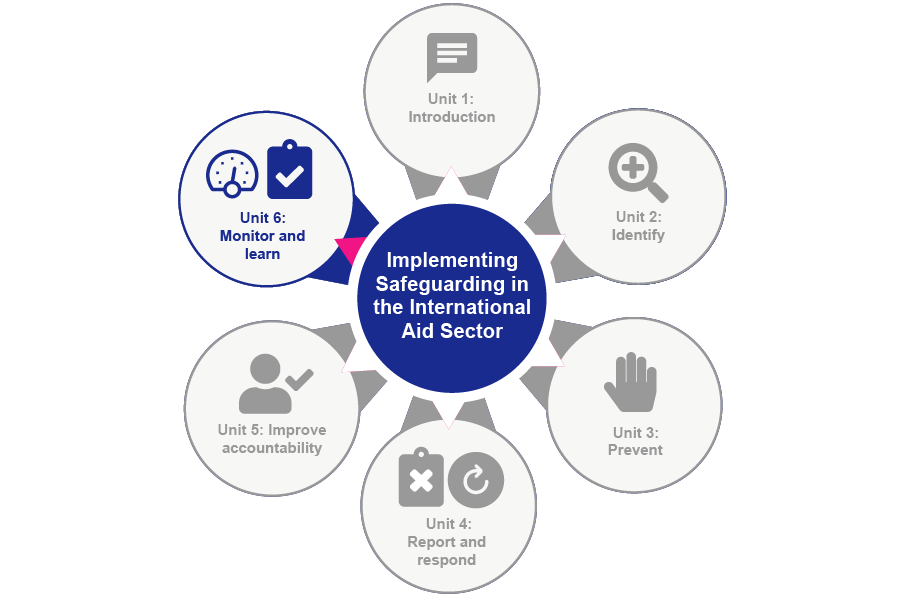Unit 6: Learning and organisational culture
Introduction

Congratulations on getting to the final unit for this course – Unit 6! This unit focuses on monitoring and learning when implementing safeguarding in our organisations.
It provides an opportunity to reflect on what you already know through your study so far, as well as your experience of safeguarding from your practice.
The key themes of Unit 6 are:
- Strengthening a safeguarding culture within organisations.
- Strengthening report handling mechanisms.
- The importance of good and regular supervision.
- Embedding learning – from managing safeguarding concerns to preventing harm from occurring in the first place.
As you work through this unit, the narrative and the activities enable you to reflect on, update and further develop your knowledge and practice of safeguarding to protect people from all forms of harm. Implementing this knowledge to strengthen a safeguarding culture in your organisation also brings about greater accountability in the international aid sector.
These activities, together with the tools you have learnt to apply on this course, will help you to apply your learning and further understand roles and responsibilities across safeguarding in organisations working in the international aid sector.
To test your knowledge and understanding to date, take a moment to reflect on the following statements and record whether you think they are correct or incorrect.

Well done if you noted that all the statements are correct. But how can you be sure that your organisation is taking steps to uphold these statements?
To do so we must monitor and learn to gauge how well we are implementing safeguarding in our organisations, and we need to develop a positive culture that supports safeguarding.
